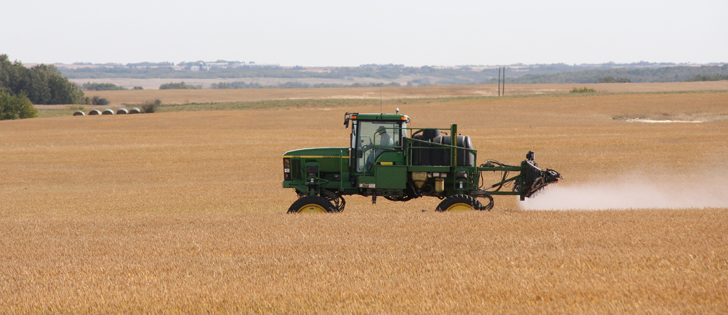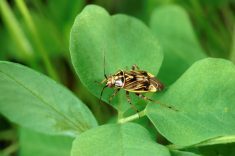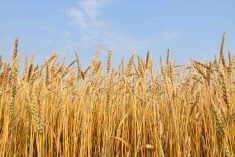A veterinarian in Shaunavon, Sask., believes feed with glyphosate residue adversely affects cattle health
SWIFT CURRENT, Sask. — A Saskatchewan veterinarian blames glyphosate in feed for livestock health concerns he has encountered but Monsanto disputes that claim, saying studies show gut microbes aren’t adversely affected by the chemical.
Dr. Ted Dupmeier, who operates his own practice at Shaunavon, told about 50 people at a recent event he called an awareness seminar that he began investigating after being unable to diagnose problems in a dairy herd in which cows were inexplicably dying. He said after removing feed that had been sprayed with glyphosate the problems were resolved.
Read Also

Beef check-off collection system aligns across the country
A single and aligned check-off collection system based on where producers live makes the system equal said Chad Ross, Saskatchewan Cattle Association chair.
“The other thing that really started to make me think about it as a veterinarian is, boy, I see a lot of clostridial problems,” he said in an interview. “When we have glyphosate in there, we’ll see the clostridial bugs go up even in vaccinated herds.”
Related story:
He believes the problem is that glyphosate acts as an antibiotic, for which it is patented, and kills off good bacteria in the gut.
He presented two examples of problems in well-managed beef herds.
In a herd of 250, the producer reported navel infections, stillborns, weak calves and skeletal problems. The herd was eating Roundup Ready corn that had been sprayed twice.
Dupmeier said necropsies found fat, large livers that were mottled and friable, or like sawdust inside.
The lab found no disease or mycotoxins in the animals but did find glyphosate at 448 parts per billion in the corn.
Removing the feed, then feeding molasses to kickstart the rumen, resulted in healthy surviving calves.
In another case he discussed involving a herd of 350 cows, calves on a commercial creep ration were affected by coccidia.
Four calves died and treatment wasn’t working, Dupmeier said.
Glyphosate levels in the feed were measured at 548 ppb, he said.
After removing the creep ration and administering a multiple B vitamin and iron, the calves improved within three days and went to pasture after five days.
Academics have also raised concern about the effects of glyphosate on gut microbes for poultry, cattle and swine.
Monsanto, which developed glyphosate, disputes several 2013 studies regarding each of these species.
In a publication regarding genetically modified organisms and animal agriculture, Monsanto’s food safety scientific affairs lead John Vicini said studies have shown no microbial disruption in animals overall.
One study in sheep, for example, in which the animals were fed diets representing the highest glypho-sate residue in grass three to eight days after application, found no effect on rumen function, he said.
Monsanto spokesperson Trish Jordan said there is no scientific basis to blame glyphosate residue on animal feed for losses.
“Commercial livestock populations are the largest consumers of GE crops and globally billions of animals have been eating GE feed for almost two decades,” she said.
Dupmeier said he has no problems with the use of glyphosate, or with Monsanto, but he thinks more research is needed into how long animals can safely eat a certain amount.
He said the problem isn’t widespread because there is a tremendous difference in susceptibility. He finds young animals, swine and sheep most affected.
“There are many factors here. That’s why I’m saying this is an awareness meeting.”


















